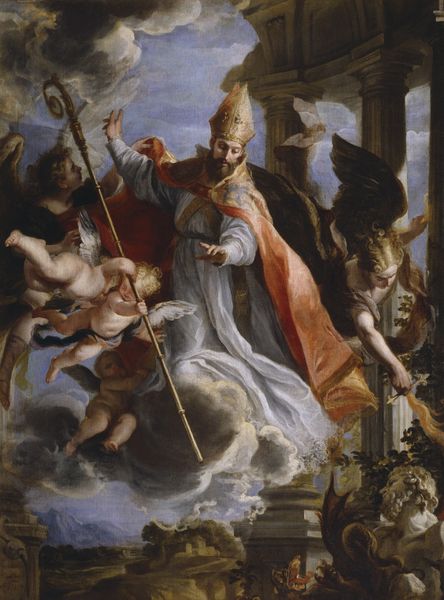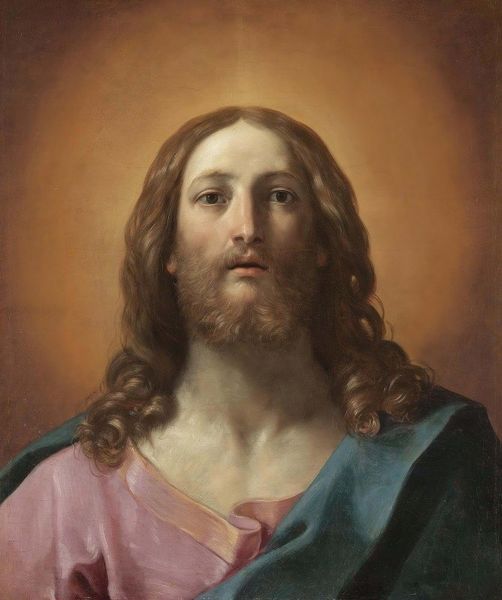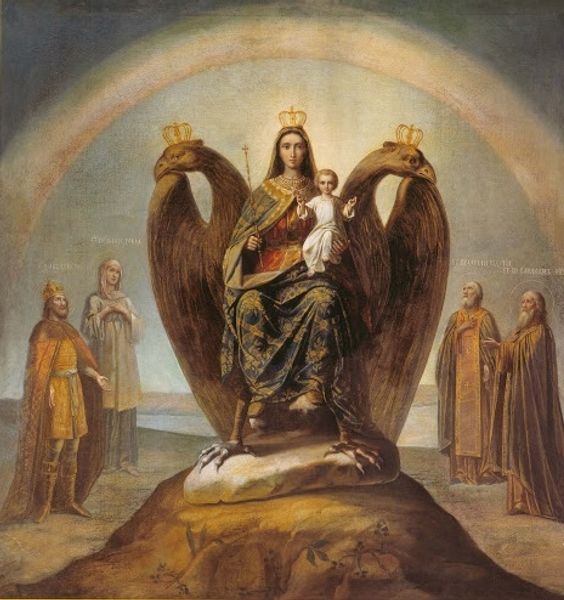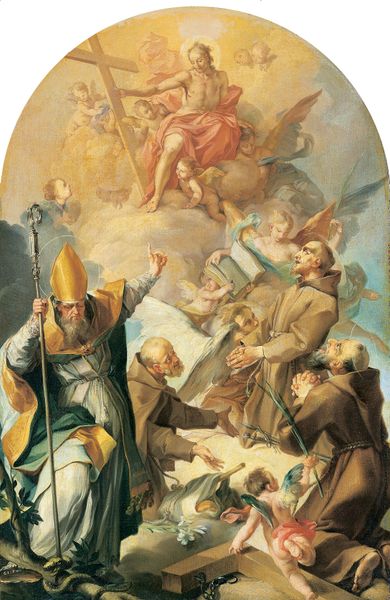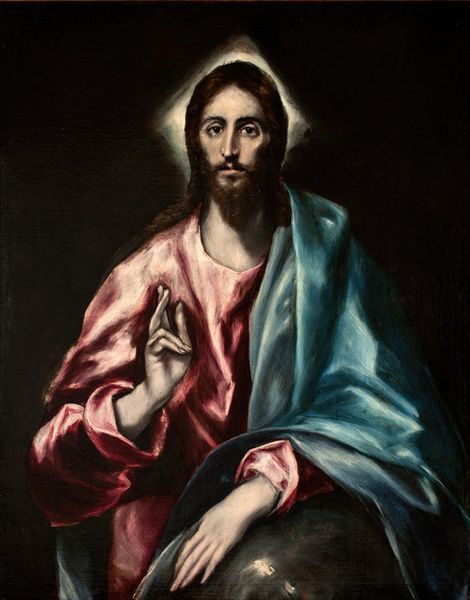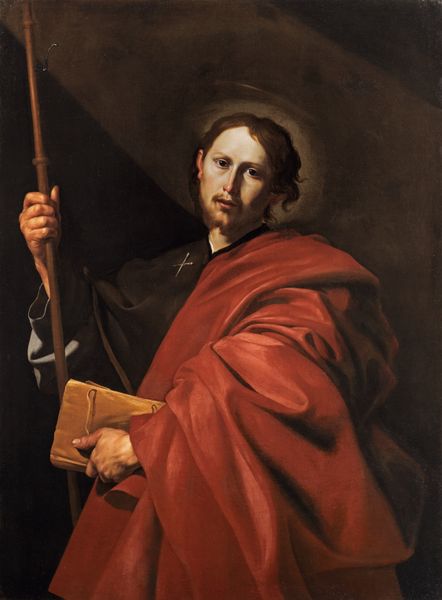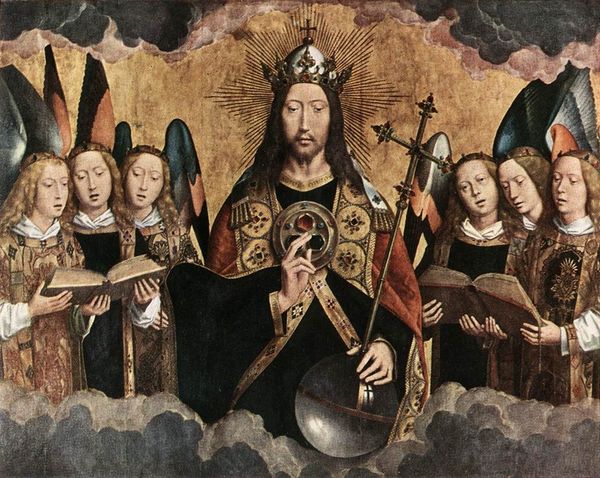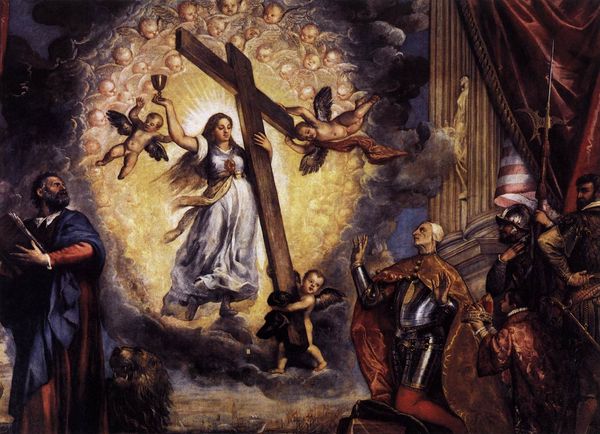
painting, oil-paint
#
portrait
#
baroque
#
painting
#
oil-paint
#
figuration
#
history-painting
#
academic-art
Copyright: Public domain
Vladimir Borovikovsky created this depiction of St. Alexander Nevsky with oil on canvas. The painting’s appeal lies in the tension between the heavenly and the earthly. Borovikovsky used traditional painting methods, manipulating oil paint to achieve a range of textures, from the softness of the clouds to the sheen of Nevsky's armor. The application of paint in thin layers allowed the artist to create luminosity, a key factor in conveying the saint's divine status. Yet, the use of oil on canvas places this work firmly within a European tradition of easel painting, a format closely tied to the patronage system of the era. The artist must have worked within the confines of his studio, spending a considerable amount of time and effort in its production. Ultimately, the painting’s combination of artistic skill and cultural symbolism demonstrates how deeply intertwined art, craft, and social context are. Examining this artwork through the lens of materials and processes reveals the complex layers of meaning embedded within it.
Comments
No comments
Be the first to comment and join the conversation on the ultimate creative platform.
